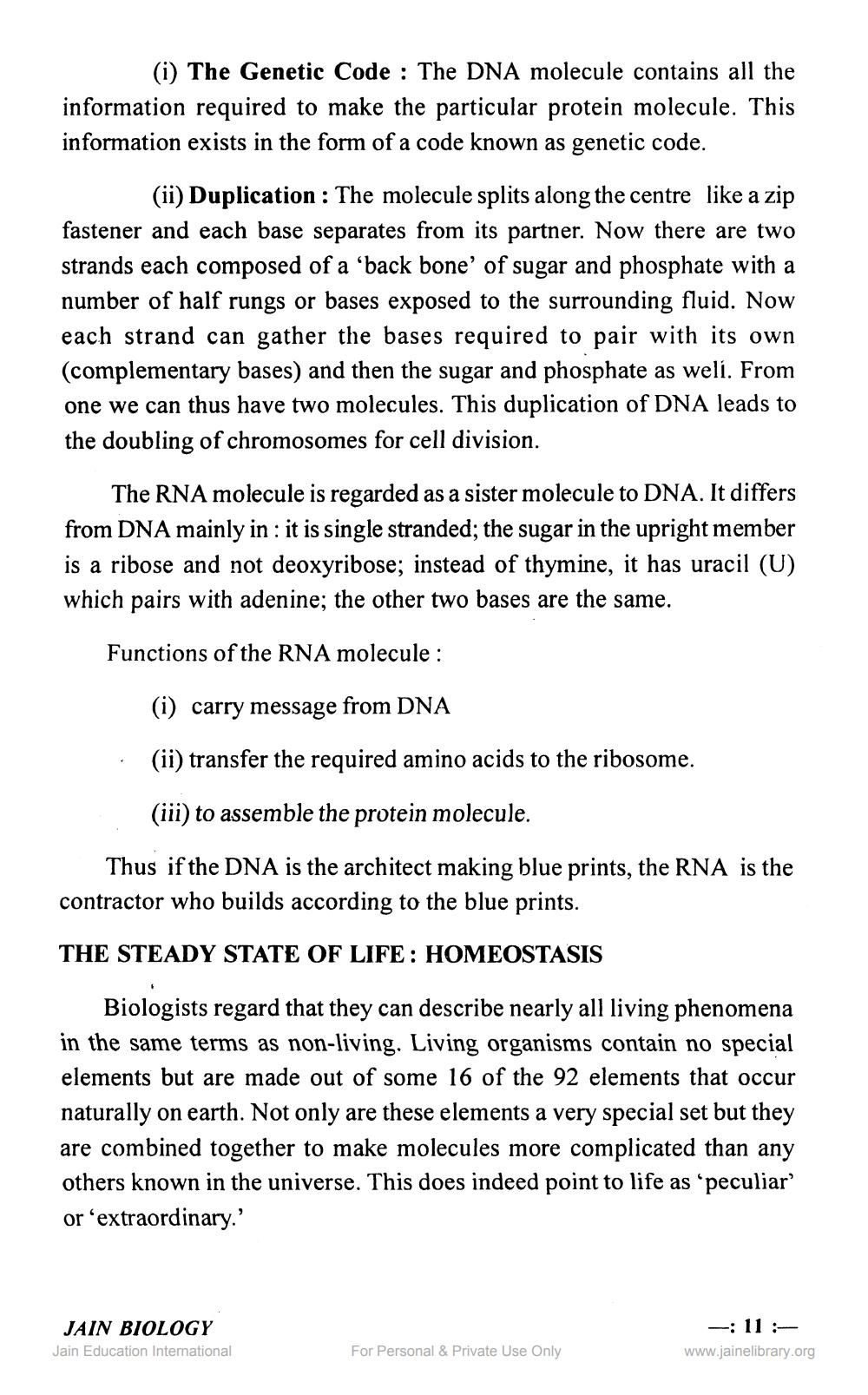________________
(i) The Genetic Code : The DNA molecule contains all the information required to make the particular protein molecule. This information exists in the form of a code known as genetic code.
(ii) Duplication : The molecule splits along the centre like a zip fastener and each base separates from its partner. Now there are two strands each composed of a 'back bone' of sugar and phosphate with a number of half rungs or bases exposed to the surrounding fluid. Now each strand can gather the bases required to pair with its own (complementary bases) and then the sugar and phosphate as well. From one we can thus have two molecules. This duplication of DNA leads to the doubling of chromosomes for cell division.
The RNA molecule is regarded as a sister molecule to DNA. It differs from DNA mainly in : it is single stranded; the sugar in the upright member is a ribose and not deoxyribose; instead of thymine, it has uracil (U) which pairs with adenine; the other two bases are the same.
Functions of the RNA molecule :
(i) carry message from DNA
(ii) transfer the required amino acids to the ribosome.
(iii) to assemble the protein molecule
Thus if the DNA is the architect making blue prints, the RNA is the contractor who builds according to the blue prints. THE STEADY STATE OF LIFE: HOMEOSTASIS
Biologists regard that they can describe nearly all living phenomena in the same terms as non-living. Living organisms contain no special elements but are made out of some 16 of the 92 elements that occur naturally on earth. Not only are these elements a very special set but they are combined together to make molecules more complicated than any others known in the universe. This does indeed point to life as `peculiar' or “extraordinary.'
JAIN BIOLOGY Jain Education International
-:11: www.jainelibrary.org
For Personal & Private Use Only




